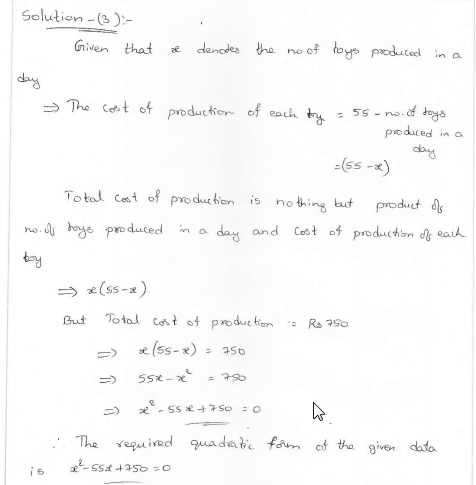RD Sharma class 10 solutions Chapter 8 Quadratic Equations Ex 8.2 Q3
RD Sharma class 10 solutions Chapter 8 Quadratic Equations Ex 8.2 Q3

Download RD Sharma Solutions here
https://sites.google.com/site/rdsharm…
https://www.youtube.com/watch?v=9nnDD…
https://www.youtube.com/watch?v=Yc2Jx…
https://www.youtube.com/watch?v=GL21t…
https://www.youtube.com/watch?v=GL21t…
Follow us on Google Plus:
https://plus.google.com/+phanicbse
https://plus.google.com/b/11323545439…
This article is about single-variable quadratic equations and their solutions. For more general information about the single-variable case, see Quadratic function . For the case of more than one variable, see Quadric .
In elementary algebra , a quadratic equation (from the Latin quadratus for “ square “) is any equation having the form
where x represents an unknown, and a , b , and c represent numbers such that a is not equal to 0 . If a = 0 , then the equation is linear , not quadratic. The numbers a , b , and c are the coefficients of the equation, and may be distinguished by calling them, respectively, the quadratic coefficient , the linear coefficient and the constant or free term.
Because the quadratic equation involves only one unknown, it is called “ univariate “. The quadratic equation only contains powers of x that are non-negative integers, and therefore it is a polynomial equation , and in particular it is a second degree polynomial equation since the greatest power is two.
Quadratic equations can be solved by factoring , by completing the square , by using the quadratic formula , or by graphing . Solutions to problems equivalent to the quadratic equation were known as early as 2000 BC
A quadratic equation with
real
or
complex
coefficients
has two solutions, called
roots
. These two solutions may or may not be distinct, and they may or may not be real.
RD Sharma Class 10 Solutions
Quadratic Equations
Class 10 Maths Sample Papers
